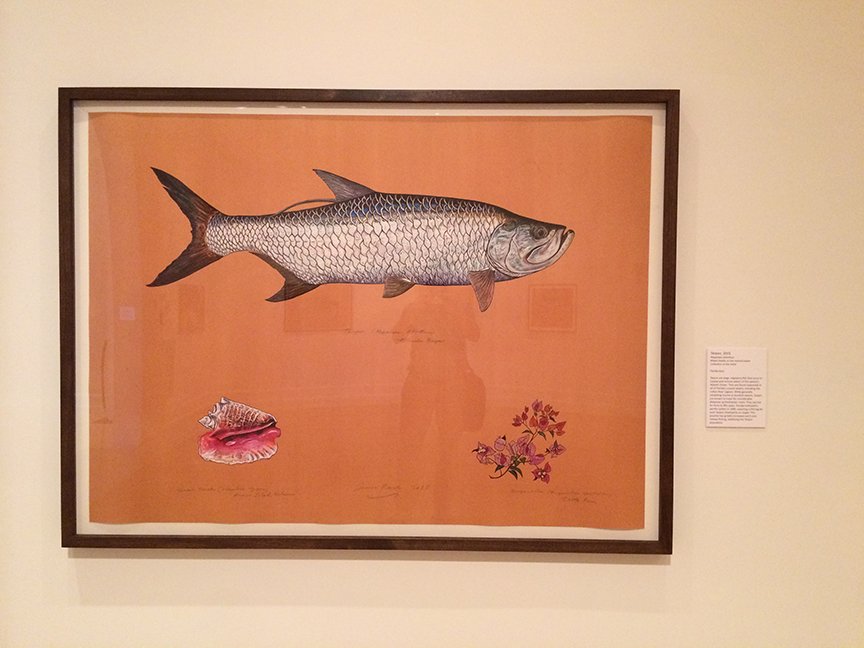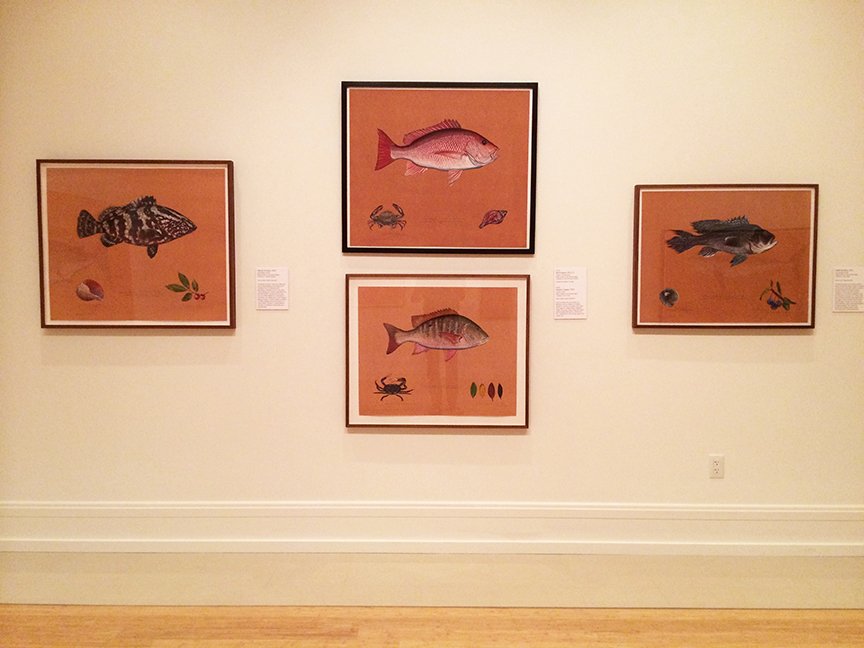Ocean Fishes
Born and raised in Easton, Connecticut, artist, writer, and naturalist James Prosek made his authorial debut as nineteen-year-old Junior at Yale University with Trout: an Illustrated History (Alfred A. Knopf, 1996), which featured seventy of his watercolor paintings of the trout of North America. Subsequently, Prosek won a Peabody Award in 2003 for his documentary about traveling through England in the footsteps of Izaak Walton, the seventeenth-century author of The Compleat Angler. He also co-founded a conservation initiative called World Trout in 2004 with Yvon Chouinard, the owner of Patagonia clothing company, which raises money for coldwater habitat conservation through the sale of T-shirts featuring trout paintings. His book Eels: An Exploration, from New Zealand to the Sargasso, of the World's Most Amazing and Mysterious Fish, published in September 2010, was a New York Times Book Review editor's choice, and is the subject of a documentary for the PBS series "Nature" that aired in 2013. Having published more than thirteen volumes, including books for children, he is currently working on a book about how we name and order the natural world and an article for National Geographic on the Sargasso Sea.
Prosek’s paintings have been exhibited at many prominent museums and galleries, including the Virginia Museum of Fine Arts (Richmond), the Smithsonian American Art Museum (Washington, DC). He has been given solo exhibitions at The Aldrich Contemporary Art Museum in Ridgefield, CT, The Addison Gallery of American Art, the Philadelphia Museum of Art, and the National Academy of Sciences in Washington, DC, among others.
* * * *
James Prosek’s most recently completed work, Ocean Fishes (Rizzoli, 2012), is a collection of life-size paintings of thirty-five Atlantic fishes, based on individual specimens he traveled to see.1 Drawn from various collections as well as the artist’s studio, the current exhibition includes twenty-two life-size mixed media paintings of some of the best known species of saltwater fish. In addition to the images shown in the book, Prosek has created portraits of a Tarpon and Great White Shark to be premiered in Vero Beach.
Despite the success of his earlier books, Prosek wanted to avoid his works being dismissed simply as documentary illustration. Through years of research for his two books on trout diversity (in which collectively he published two hundred watercolors of trout from North America, Europe, Asia and North Africa) he had concluded that characterizing a “portrait” of a single fish as representative of an entire species was misleading. Rejecting the scale of his watercolors made for books, he decided to paint a monumental work. His painting of a 750-pound Bluefin Tuna that he saw harpooned in Cape Cod Bay in 2003 launched his Ocean Fishes series. “The experience set me on the journey to paint these Atlantic fish,” Prosek says “not at the scale of a field guide, but life-size. I wanted people to see how magnificent these creatures are that we’re losing from our oceans when they are alive and pulsing with color and light.”2
Prosek’s newly-created painting of a Great White Shark, is based on a fish he saw off Cape Cod during the summer of 2014. He spent two days with marine biologist Greg Skomal, who has helped pioneer methods of satellite tagging and tracking white sharks in the Atlantic. One of the first Skomal tagged, named “Lydia,” traveled 24,000 miles in one year, crossing the entire Atlantic and traveling from Newfoundland to Florida, including visits to Cape Cod. Prosek’s Great White painting portrays “Chex,” a mature male White Shark who bears scars and marks from seals and perhaps other sharks, who have fought back. Prosek depicts these scars faithfully, noting that they remind him of artist Cy Twombly’s mark making. “My mission is to have people see these fish as individuals. Naming the sharks has helped us see them as creatures with personalities. I feel we become more invested in conservation if we acknowledge a single fish, and the scars and scrapes are evidence of their trials in life, where they’ve been, what they’ve been through. I want to show all of it, the residue of their own existence.”
Prosek feels he has to experience each species firsthand – see the living fish just out of the water before it loses its true colors. Through direct observation and imaginative application of his paints, he reveals the subtle colors and forms of fishes often hidden from our view beneath the water’s surface. In a recent issue of Nature Conservancy magazine, Prosek explains that he wanted to “paint fish that are important to humans”—specifically food and game fish. “We fish, even if we let the fish go, because we have that predatory instinct. Connected to that predatory urge is an intense love of the creature.”3
His love for each fish he encounters is reflected in his attention to detail, and the care with which he applies each brush stroke. Viewed up close, his multicolored dabs, drips and lines of varying transparency dance along the sleek forms. While Prosek has often been compared with classic naturalist-artists such as Mark Catesby and John James Audubon, he sees himself as a thoroughly contemporary artist. He emphasizes the close relationship between his paintings and those of twentieth-century abstract painters, especially Milton Avery, Charles Burchfield, and Mark Rothko. “It’s what’s within the fish that I’m concerned with,” Prosek explains, “these beautiful patterns and abstractions.”4
As the eminent naturalist Louis Agassiz advocated, James Prosek has learned to read the “book of nature” for himself, concentrating not on the encyclopedic approach of a field guide illustrator, but more on getting to the essence of personal experience—what he can know and observe directly.5 Prosek’s work challenges us to consider how art can inform and transform our personal relationships to the natural world.
Jay Williams
Curator of Exhibitions and Collections
1. James Prosek, Ocean Fishes (New York: Rizzoli, 2012), essays by Robert M. Peck, Christopher Riopelle; foreword by Peter Matthissen.
2. Unless otherwise noted, quotations in this essay are from an interview conducted by curator Jay Williams, May 15, 2015.
3. James Prosek quoted in Hal Clifford and Jason Houston, Picture the Leviathan (Boulder, Colorado: Take One Creative, 2012), documentary film.
4. Ibid.
5. “Learn to read the book of Nature for yourself. Those who have succeeded best have followed for years some slim thread which once in a while has broadened out and disclosed some treasure worth a life-long search." Louis Agassiz quoted in David Starr Jordan, Science Sketches, (Chicago: A. C. McClurg & Co., 1911), 145
June 6 – September 6, 2015
Vero Beach Museum of Art
3001 Riverside Park Drive
Vero Beach, Florida 32963




















































